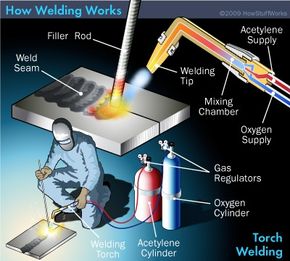Achieving Welding Quality: Unveiling the Tricks of WPS Implementation and Optimization
In the world of welding, achieving excellence is a quest that hinges on the precise implementation and optimization of Welding Treatment Specs (WPS) By delving into the vital aspects, methods, difficulties, and best methods associated with WPS, a globe of welding quality awaits those that are prepared to discover its midsts.
Value of WPS in Welding
The Significance of Welding Treatment Requirements (WPS) in the welding sector can not be overemphasized, acting as the backbone for making certain uniformity, quality, and safety and security in welding operations. A WPS provides comprehensive instructions on just how welding is to be lugged out, consisting of important variables such as materials, welding processes, joint layout, filler steels, preheat and interpass temperatures, welding currents, voltages, travel speeds, and more. By adhering to a well-defined WPS, welders can maintain uniformity in their work, causing consistent weld high quality throughout different tasks.

Crucial Element of WPS
Reviewing the important components of a welding treatment requirements (WPS) is necessary for comprehending its role in welding procedures. A detailed WPS includes numerous essential components that guide welders in attaining high quality and consistency in their work. One vital aspect of a WPS is the welding procedure specification, which describes the specific welding procedures to be used, such as gas tungsten arc welding (GTAW) or secured steel arc welding (SMAW) Additionally, the WPS consists of details on the welding materials, such as the type and specifications of the base metal and filler steel to be made use of. The WPS additionally specifies necessary variables like welding criteria, interpass and preheat temperature requirements, and post-weld warm therapy procedures. In addition, it consists of info on joint layout, fit-up, and any kind of unique techniques or precautions required for the welding operation. By including these crucial aspects right into the WPS, welding treatments can be standard, ensuring quality, performance, and safety in welding procedures.
Methods for WPS Optimization

Second of all, training and credentials of welding workers according to the certain requirements of the WPS is critical. Giving comprehensive training programs and making sure that welders are licensed to execute treatments outlined in the find WPS can result in better welds and minimized rework.
In addition, leveraging innovation such as welding software application and tracking systems can assist in maximizing WPS. These devices can aid in tracking variables, guaranteeing criteria are within specified limitations, and offering real-time comments to welders, allowing them to make prompt changes for improved weld high quality.
Typical Obstacles and Solutions
Facing barriers in applying the approaches for WPS optimization can prevent welding operations' performance and top quality. One typical difficulty is inadequate training or understanding of the welding treatment requirements (WPS) amongst the welding team.
Another obstacle is the lack of proper documentation and record-keeping, which is essential for WPS optimization. Without clear documents of welding parameters, products used, and inspection outcomes, it becomes tough to recognize locations for improvement and make certain uniformity in welding processes. Carrying out a durable paperwork system, such as look at here now digital welding management software, can aid enhance record-keeping and facilitate information analysis for continual renovation.
Furthermore, irregular welding devices calibration and upkeep can position a considerable challenge to WPS optimization. Regular devices checks, calibration, and upkeep routines need to be followed purely to ensure that welding parameters are accurately regulated and maintained within the defined tolerances (welding WPS). By attending to these usual obstacles with proactive remedies, welding procedures can boost effectiveness, top quality, and overall welding excellence
Best Practices for WPS Execution
To make sure effective WPS application in welding procedures, adherence to industry requirements and thorough attention to information are extremely important. When initiating WPS application, it is critical to start by thoroughly comprehending the certain welding requirements of the job. This involves a thorough review of the welding procedure specs, materials to be bonded, and the environmental conditions in which the welding will certainly occur.
Once the requirements are clear, the next step is to select the suitable welding treatment that straightens with these requirements. This includes getting in touch with the appropriate codes and requirements, such as those given by the American Welding Society (AWS) or the International Company for Standardization (ISO), to guarantee conformity and top quality.
In addition, documenting the entire WPS execution process is vital for traceability and top quality control. Thorough documents need to be advice maintained relating to welding specifications, material preparation, preheat and interpass temperatures, welding consumables utilized, and any type of discrepancies from the original treatment. Normal audits and testimonials of the WPS can aid recognize locations for enhancement and guarantee continuous optimization of the welding process.


Conclusion
To conclude, the application and optimization of Welding Treatment Specs (WPS) is essential for achieving welding quality. By understanding the crucial elements of WPS, executing reliable strategies for optimization, attending to common challenges, and complying with ideal practices, welders can make sure top quality welds and secure working conditions. It is necessary for professionals in the welding sector to prioritize the correct implementation of WPS to boost general welding efficiency and achieve preferred end results.
The Importance of Welding Procedure Specifications (WPS) in the welding industry can not be overstated, serving as the backbone for making certain consistency, high quality, and security in welding operations. A WPS provides detailed instructions on just how welding is to be brought out, consisting of important variables such as materials, welding procedures, joint layout, filler steels, interpass and preheat temperatures, welding currents, voltages, traveling rates, and a lot more. One critical aspect of a WPS is the welding procedure requirements, which lays out the certain welding procedures to be utilized, such as gas tungsten arc welding (GTAW) or protected metal arc welding (SMAW) By including these essential components right into the WPS, welding procedures can be standard, making certain top quality, effectiveness, and safety in welding procedures.
It is important for specialists in the welding industry to prioritize the proper application of WPS to improve general welding efficiency and attain desired outcomes.